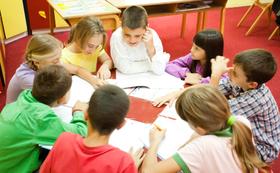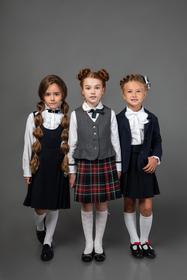Top Rankings
North Tonawanda City School District ranks among the top 20% of public school district in New York for:
Category
Attribute
Community Size
Largest student body (number of students) (Top 1%)
For the 2025-26 school year, there are 4 public elementary schools serving 1,686 students in North Tonawanda City School District. This district's average elementary testing ranking is 5/10, which is in the bottom 50% of public elementary schools in New York.
Public Elementary Schools in North Tonawanda City School District have an average math proficiency score of 51% (versus the New York public elementary school average of 52%), and reading proficiency score of 42% (versus the 48% statewide average).
Minority enrollment is 18% of the student body (majority Hispanic), which is less than the New York public elementary school average of 61% (majority Hispanic).
Overview
This School District
This State (NY)
# Schools
6 Schools
3,702 Schools
# Students
3,137 Students
1,748,855 Students
# Teachers
292 Teachers
153,131 Teachers
Student-Teacher Ratio
11:1
11:1
Student By Grade
District Rank
North Tonawanda City School District, which is ranked #525 of all 1,008 school districts in New York (based off of combined math and reading proficiency testing data) for the 2022-2023 school year.
The school district's graduation rate of 91% has increased from 85% over five school years.
Overall District Rank
#515 out of 1017 school districts
(Bottom 50%)
(Bottom 50%)
Math Test Scores (% Proficient)
54%
52%
Reading/Language Arts Test Scores (% Proficient)
44%
49%
Science Test Scores (% Proficient)
88%
78%
Graduation Rate
91%
87%
Students by Ethnicity:
Diversity Score
0.29
0.73
% American Indian
1%
1%
% Asian
1%
10%
% Hispanic
6%
30%
% Black
3%
16%
% White
84%
39%
% Hawaiian
n/a
n/a
% Two or more races
5%
4%
All Ethnic Groups
District Revenue and Spending
The revenue/student of $24,887 in this school district is less than the state median of $31,324. The school district revenue/student has stayed relatively flat over four school years.
The school district's spending/student of $24,787 is less than the state median of $32,199. The school district spending/student has stayed relatively flat over four school years.
Total Revenue
$78 MM
$78,541 MM
Spending
$78 MM
$80,737 MM
Revenue / Student
$24,887
$31,324
Spending / Student
$24,787
$32,199
Best North Tonawanda City School District Public Elementary Schools (2025-26)
School
(Math and Reading Proficiency)
(Math and Reading Proficiency)
Location
Quick Facts
Rank: #11.
Ohio Elementary School
(Math: 40-44% | Reading: 55-59%)
Rank:
Rank:
6/
Top 50%10
625 Ohio Ave
North Tonawanda, NY 14120
(716) 807-3800
North Tonawanda, NY 14120
(716) 807-3800
Gr: K-4 | 367 students Student-teacher ratio: 12:1 Minority enrollment: 12%
Rank: #22.
North Tonawanda Intermediate School
(Math: 55% | Reading: 39%)
Rank:
Rank:
5/
Bottom 50%10
1500 Vanderbilt Ave
North Tonawanda, NY 14120
(716) 807-3825
North Tonawanda, NY 14120
(716) 807-3825
Gr: 4-6 | 733 students Student-teacher ratio: 11:1 Minority enrollment: 17%
Rank: #33.
Spruce School
(Math: 45-49% | Reading: 40-49%)
Rank:
Rank:
5/
Bottom 50%10
195 Spruce St
North Tonawanda, NY 14120
(716) 807-3850
North Tonawanda, NY 14120
(716) 807-3850
Gr: K-5 | 340 students Student-teacher ratio: 9:1 Minority enrollment: 24%
Rank: #44.
Drake School
(Math: 30-39% | Reading: 40-49%)
Rank:
Rank:
4/
Bottom 50%10
380 Drake Dr
North Tonawanda, NY 14120
(716) 807-3725
North Tonawanda, NY 14120
(716) 807-3725
Gr: K-5 | 246 students Student-teacher ratio: 11:1 Minority enrollment: 20%
Recent Articles

Public School Open House & Enrollment Season Guide
A parent-focused guide to the public school open house and enrollment season, with expert questions, timelines, and decision tips.

School Supply Budget 2026: Fees, Books, Tech Costs
School Supply Budget 2026 guide for parents, covering fees, textbooks, technology, and hidden extras to plan ahead.

Education Funding in America (2025 Update)
Comprehensive 2025 update on public school funding in America, new federal and state policies, per-pupil spending, and equity challenges.





